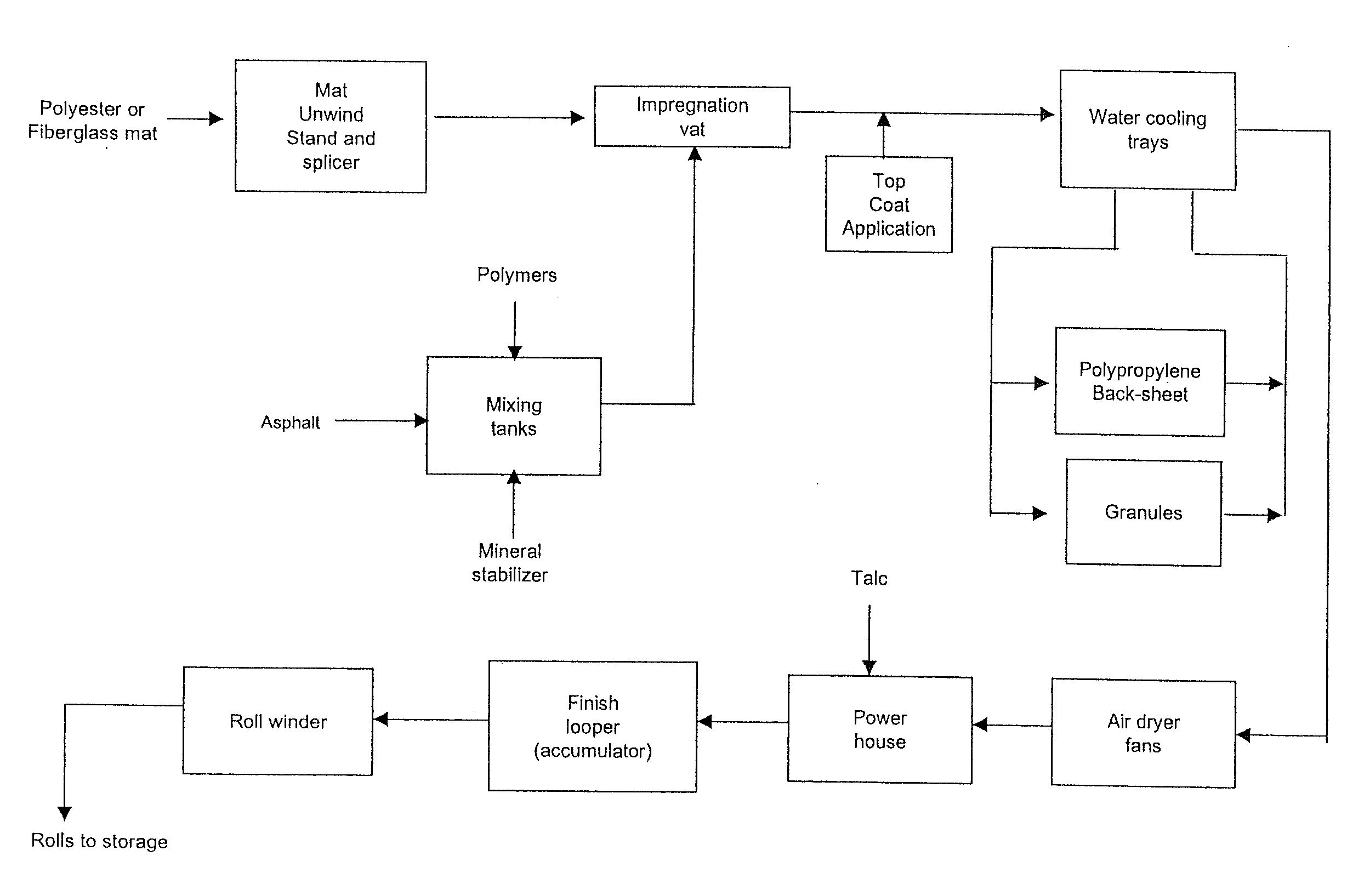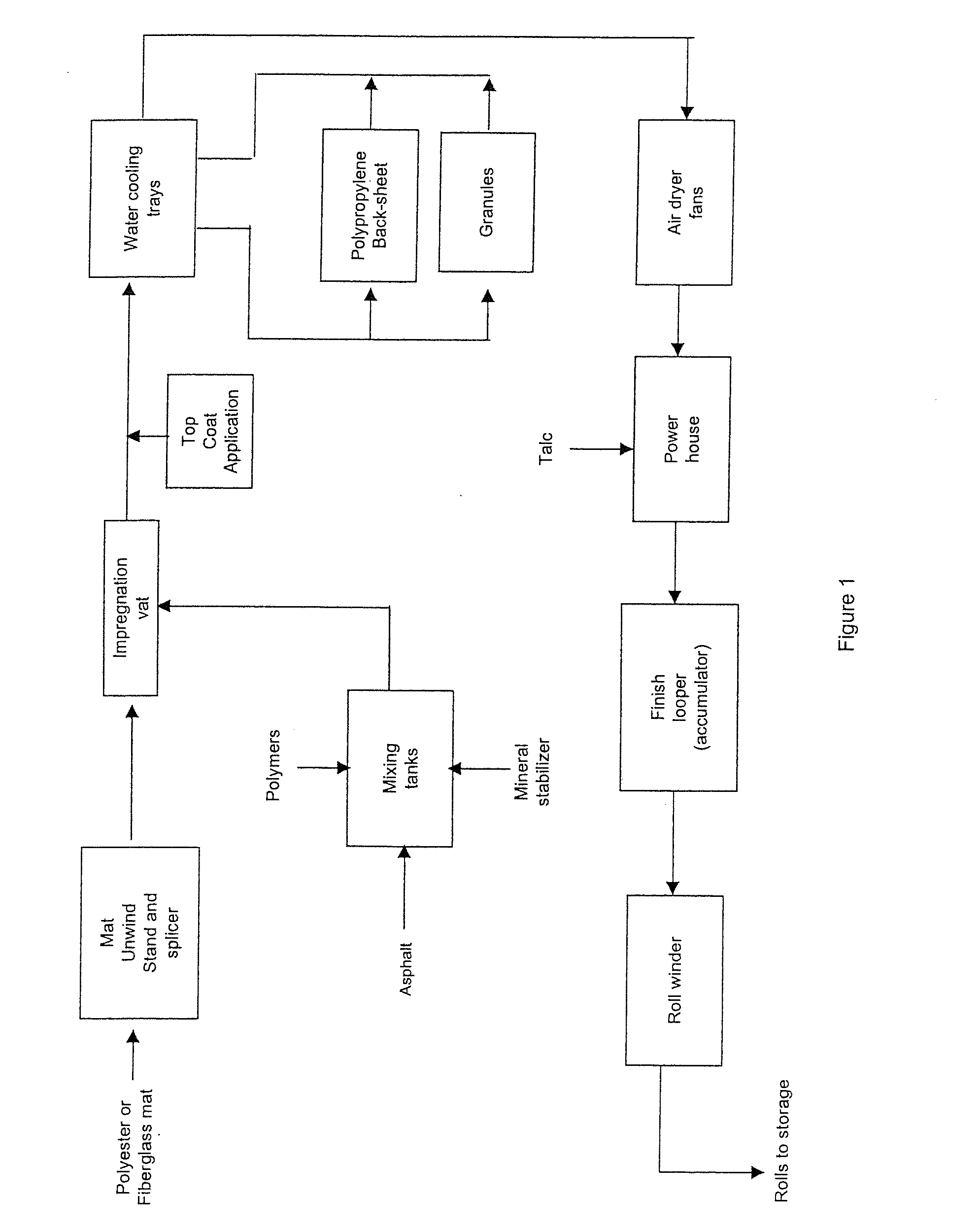Process For Coating Modified Bitumen Membranes Using Powder Coatings
a technology of modified bitumen and coating, applied in the direction of powdery paints, coatings, building components, etc., can solve the problems of major maintenance expenditures of owners, difficult coating of granules, coating problems, etc., to achieve greater strength and adhesion to the roofing membrane, easy and maximum effect, and high reflectivity
- Summary
- Abstract
- Description
- Claims
- Application Information
AI Technical Summary
Benefits of technology
Problems solved by technology
Method used
Image
Examples
example 1
[0037]A Top coat Formula:
1.Fine clad M8024 (polyester resin)44.83%2.B 1530 (urethane cross linker)24.14%3.Benzoin (degassing agent) 0.34%4.BYK 363 (flow additive) 1.03%5.KE 9594 (dibutyl tin dilaurate) 0.69%6.Ti-Pure14.48%7.NYTAL 7700 (filler)14.48%
example 2
[0038]Another Formula For The Top coat:
1.cargill 30-301138.12%2.cargill 24-243059.99%3.Resiflow 1.50%4.Benzoin 0.39%
[0039]The other component of the inventive top coating composition is a pigment. The pigment employed in the present invention can be any pigment that is capable of providing a highly reflective coating after the resultant mixture is cured. Typically, the pigment provides a coating that is white in color. Various shades of white are also possible as well as other colors that are capable of providing a coating that is highly reflective.
[0040]Suitable pigments that can be employed in the present invention include, but are not limited to: titanium dioxide, calcium carbonate, colemaniute, aluminum trihydride (ATH), borate compounds, and mixtures thereof. One highly preferred pigment employed in the present top coating composition is titanium dioxide, which produces a white color. The coating can be formulated in a variety of colors to conform to building aesthetics.
[0041]T...
example 3
[0072]The process for manufacture of the top coat of the present invention is as follows:
[0073]The asphalt is heated to 400° F. Polymer is added and high shear mixed. Additional fillers are added under low shear. The asphalt compound made undergoes Quality Control inspection. Upon QC approval it is then pumped to the production line. The compound is saturated in reinforcement. The white powder is applied to the surface of the asphalt membrane. While the membrane is hot, when powder is added it is heat activated and fuses to the membrane. The temperature ranges from 200° F.-400° F. The combo is cooled, dried and rolled up in 100 sq. ft.
PUM
| Property | Measurement | Unit |
|---|---|---|
| temperature | aaaaa | aaaaa |
| temperature | aaaaa | aaaaa |
| solar reflectance | aaaaa | aaaaa |
Abstract
Description
Claims
Application Information
 Login to View More
Login to View More - R&D
- Intellectual Property
- Life Sciences
- Materials
- Tech Scout
- Unparalleled Data Quality
- Higher Quality Content
- 60% Fewer Hallucinations
Browse by: Latest US Patents, China's latest patents, Technical Efficacy Thesaurus, Application Domain, Technology Topic, Popular Technical Reports.
© 2025 PatSnap. All rights reserved.Legal|Privacy policy|Modern Slavery Act Transparency Statement|Sitemap|About US| Contact US: help@patsnap.com


